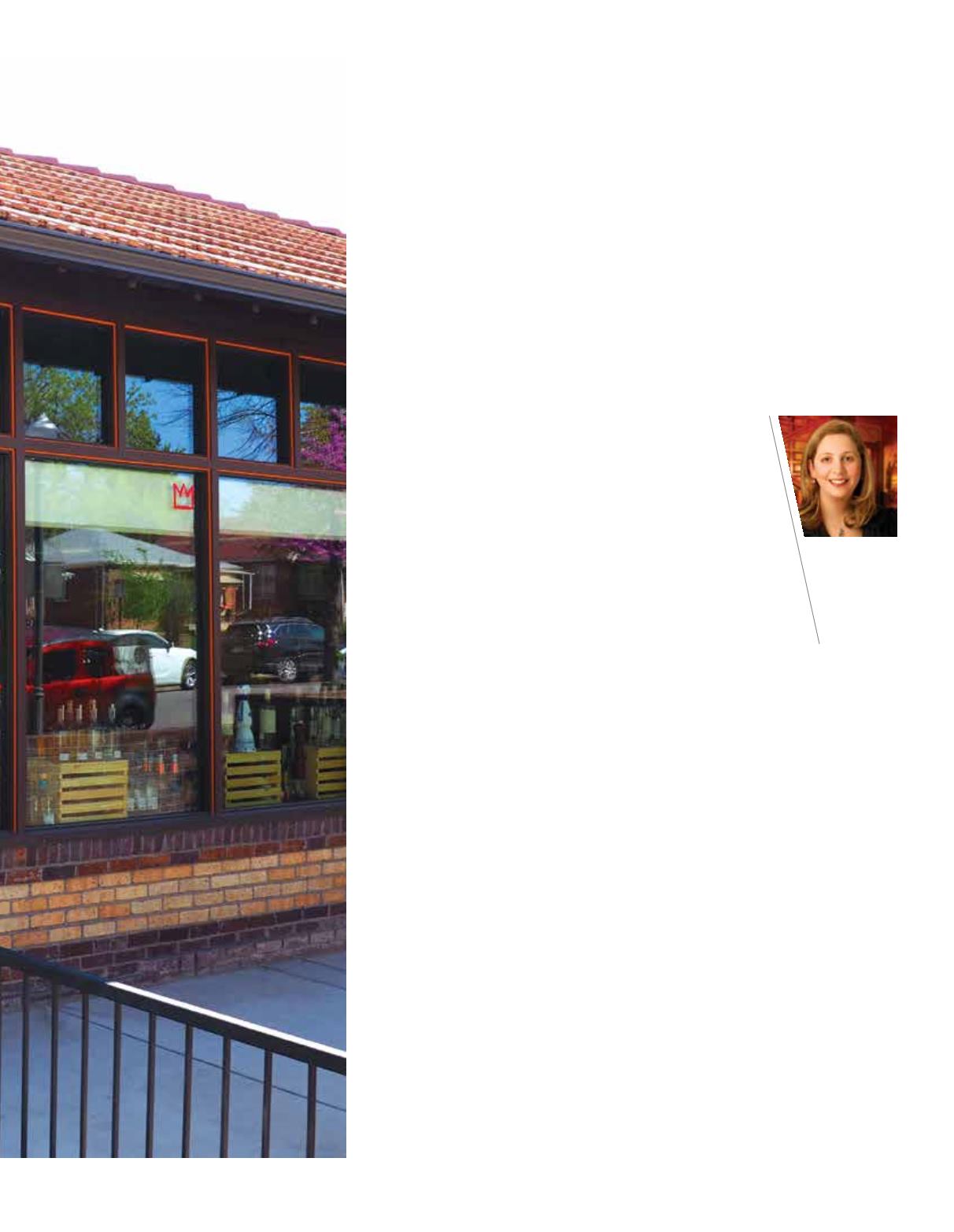

JUNE 2017 \ BUILDING DIALOGUE \
75
S
tanding at the intersection of 44th and Al-
cott, you can get an authentic taste of Den-
ver’s streetcar legacy, updated for the 21st
century. The project at this intersection, now
known as Cobbler’s Corner, is a case study in how to
bring continuity and character to infill development.
Built in the 1920s, the building on the southeast
corner of the intersection was home to the Alcott
Shoe Shop, the business of Thomas and Catherine
Pottle. A neighborhood grocery, bakery and creamery
also leased space in the building. This cluster of small,
independent businesses was not unusual in Denver
at the time, and is in fact replicated in neighborhoods
across the city, where streetcar lines fostered embedded
mixed-use districts to service the surrounding neighborhood. Some-
times these districts are large, like South Pearl Street in Platt Park or
Tennyson in Berkeley. More often, they are less than a block long and
marked by only a handful of structures.
A 2013 study by Beth Glandon, now the director of Discover Denver
for Historic Denver Inc., identified 62 streetcar districts spread across
the city. As Glandon explained, for nearly 80 years, Denver streetcars
transported passengers throughout the city for work, play and errands.
After the street railway system in Denver ceased operation, miles of
streetcar track were simply paved over to make way for automobiles.
Occasionally, rails still pop up through the asphalt after a long winter.
Other telltale signs of former streetcar routes are unusually wide streets
with sweeping corners.
Denver’s streetcar system began just 12 years after the founding of
the city and physically shaped Denver as we know it today. The Denver
Horse Railroad Co. began operation of the city’s first streetcar line in
1871 with “horsecars” – cars guided by fixed rails and pulled by horses
(or, often mules), transporting riders along the route. The 1880s saw 15
new streetcar companies begin operation and developer-run streetcar
lines took prospective buyers to remote Denver suburbs such as Berke-
ley and Park Hill. These lines were instrumental in stretching Denver’s
boundaries. Some expansion occurred after the turn of the century, but
never at the torrid pace of the 1880s and early 1890s. The shift to buses
and “trolley coaches” accelerated through 1950 when streetcar service
was eliminated completely. Many of the bus routes that replaced the
streetcar lines continue to run along the former streetcar routes, often
bearing the same route number.
Many of the old streetcar districts, both large and small, are experi-
encing a renewed level of investment because they foster walkability,
small businesses, and local dining and shopping options. A 2014 study
conducted by the National Trust for Historic Preservation’s Green Lab,
Reviving Denver’s Streetcar LegacyAnnie Robb
Levinsky
Executive
Director,
Historic
Denver Inc.
















